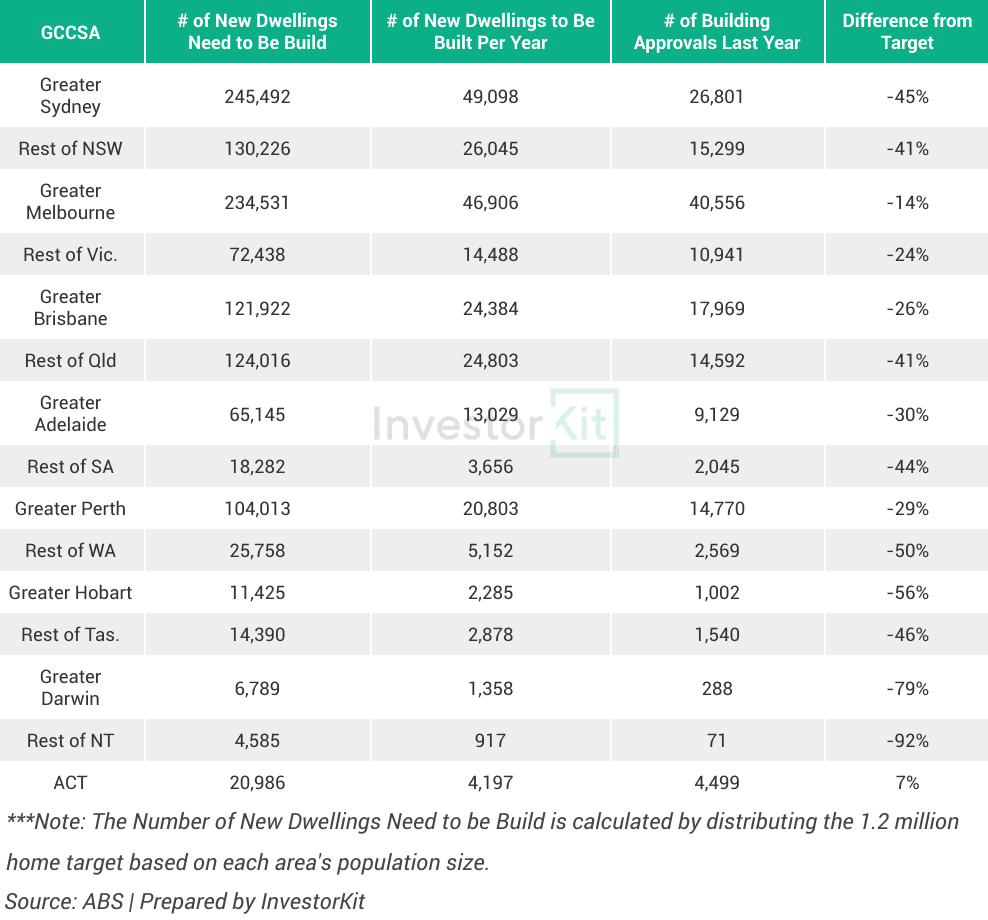

The Australian government, in partnership with state and territory administrations, launched the National Housing Accord with a commitment to construct 1.2 million new homes from July 1, 2024 to June 30, 2029, aiming to mitigate the country’s deepening housing crisis.
Despite the government’s intentions, several factors suggest that achieving this target may be impractical. Grace Nguyen (pictured) from InvestorKit identified these factors.
One of the primary concerns is the lag in housing completions.
Historical data indicated a consistent shortfall, with 2022 witnessing a 24% gap between commencements and completions.
Even with only nine months of data in 2024, a 20% shortfall is evident, exacerbating the accumulation of unfinished projects.
As of the June quarter of 2024, there were 44,853 homes built, which represents a slight increase from the previous year but still falls short of the quarterly numbers needed to meet the target.
To achieve the goal, Australia would need to average 60,000 homes each quarter over the next five years, highlighting a significant shortfall in current construction rates.

To meet the 1.2 million homes target, substantial building approvals were required early in the program.
Unfortunately, 2024 saw only 162,071 new dwelling approvals, marking a significant 32% deficit from the needed figures.
Regionally, while the Australian Capital Territory is on track, other areas like Darwin and Sydney face shortfalls of up to 79% and 45%, respectively.
The National Housing Supply and Affordability Council’s latest projections are also not optimistic, forecasting that new dwellings will reach just 1,040,000 by 2029, well below the target.
These estimates account for the ongoing demolitions that further reduce net new housing availability.
The escalation in construction costs, including both materials and labour, has significantly contributed to the slowdown in new housing developments.
For instance, the cost of building a new home has surged by approximately 40% compared to pre-2020 levels.
Additionally, the availability of residential land has diminished, with a 26% drop in new greenfield lots in 2023, pushing land prices to unprecedented levels.
The construction sector has been particularly hit by increased insolvencies, driven by rising input costs and squeezed profit margins under fixed-price contracts.
This financial strain has led to the highest cash flow negativity in over a decade, impacting the overall stability of the housing construction market, InvestorKit said.
While the industry shows signs of stabilisation, the cumulative impact of high construction costs, limited land supply, and sector insolvencies makes the 1.2 million homes target appear increasingly unattainable.
For investors, this undersupply might present opportunities as market demand continues to outstrip available housing, potentially driving property prices up, InvestorKit said.
